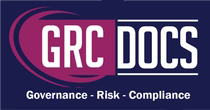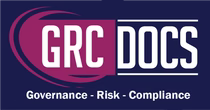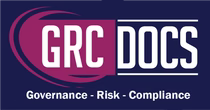AI-Powered SOC 2 Compliance Management: Automate And Accelerate Audits
Introduction
In today's fast-paced digital world, businesses are increasingly relying on artificial intelligence (AI) to enhance efficiency, decision-making, and customer experiences. AI's ability to process vast amounts of data quickly and accurately makes it a valuable asset for companies looking to stay competitive. However, with these advancements come new challenges, particularly in terms of data security and compliance. As organizations leverage AI to streamline operations, they must also ensure that their practices align with regulatory standards. One crucial compliance standard that businesses need to adhere to is SOC 2. In this article, we will explore how AI can power SOC 2 compliance management, streamline processes, and mitigate risks.

The Role Of AI In SOC 2 Compliance
The integration of AI into compliance management offers significant benefits. AI can automate many of the repetitive tasks associated with compliance, reducing the risk of human error and freeing up resources for more strategic activities. Automation streamlines operations, allowing compliance teams to focus on higher-level analysis and decision-making. Here are some key ways AI can enhance SOC 2 compliance management:
-
AI Governance Framework: An AI governance framework ensures that AI systems operate within ethical and legal boundaries. This framework is crucial for SOC 2 compliance as it helps monitor and control AI processes to ensure they align with compliance requirements. Establishing clear guidelines and policies for AI usage ensures that organizations can leverage AI's capabilities without overstepping ethical boundaries. By implementing a governance framework, businesses can maintain transparency and accountability in their AI operations, fostering trust among stakeholders and clients.
-
AI Risk Management: AI systems can identify and assess risks more efficiently than traditional methods. By analyzing large data sets, AI can detect anomalies and potential security threats in real-time. This capability is critical in an era where cyber threats are becoming more sophisticated. This proactive approach to risk management is essential for SOC 2 compliance, as it allows companies to address vulnerabilities before they become significant issues. AI's predictive analytics enable businesses to anticipate potential breaches and take preventive measures to safeguard data.
- Streamlined Audits: AI-powered tools can simplify the audit process by automatically collecting and organizing compliance data. These tools can generate comprehensive reports that provide auditors with all the information they need to assess compliance with SOC 2 standards. This not only speeds up the audit process but also ensures that no critical information is overlooked. Automated data collection reduces the manual effort involved in preparing for audits, allowing compliance teams to focus on analysis and strategic improvements.
Implementing AI For SOC 2 Compliance
To successfully integrate AI into SOC 2 compliance management, businesses should consider the following steps:
-
Assess AI Capabilities: Before implementing AI solutions, assess the capabilities of your existing systems. Determine which areas of compliance management can benefit most from AI integration, such as risk assessment, data monitoring, or audit preparation. Conducting a thorough evaluation of current processes helps identify specific pain points that AI can address. This assessment should also consider the organization's readiness to adopt AI technologies and the potential impact on existing workflows.
-
Develop an AI Strategy: Create a comprehensive AI strategy that outlines how AI will be used to support SOC 2 compliance. This strategy should include goals, timelines, and metrics for measuring success. Clearly defined objectives provide a roadmap for AI implementation, guiding decision-making and resource allocation. Additionally, involve key stakeholders to ensure alignment across the organization. Collaboration between IT, compliance, and business units fosters a cohesive approach to integrating AI into compliance management.
-
Implement AI Solutions: Choose AI solutions that align with your strategy and compliance needs. This may involve investing in AI software, partnering with AI vendors, or developing in-house AI capabilities. Selecting the right AI tools requires a careful evaluation of their features, scalability, and compatibility with existing systems. Ensure that the chosen solutions integrate seamlessly with existing systems to avoid disruptions to ongoing operations.
- Monitor and Adjust: Regularly monitor the performance of AI systems to ensure they meet compliance objectives. Use feedback and data analytics to make necessary adjustments and improvements. Continuous monitoring allows organizations to identify areas where AI systems may fall short and take corrective action promptly. This ongoing evaluation will help maintain compliance and optimize AI performance, ensuring that AI remains a valuable asset in compliance management.
Overcoming Challenges
While AI offers many benefits for SOC 2 compliance, there are challenges to consider:
-
Ethical and Legal Considerations: AI systems must be designed to operate ethically and within legal boundaries. This includes ensuring that AI does not inadvertently discriminate against certain groups or compromise data privacy. Establishing ethical guidelines for AI development and deployment is crucial for maintaining compliance and public trust. A strong AI governance framework can help address these concerns by providing oversight and accountability for AI-driven decisions.
-
Data Privacy: AI systems require access to large data sets, which can raise privacy concerns. It's essential to implement robust data protection measures to ensure compliance with privacy regulations and maintain customer trust. Data anonymization and encryption techniques can help mitigate privacy risks while allowing AI systems to analyze data effectively.
- Integration with Existing Systems: Integrating AI solutions with existing systems can be complex. Businesses must ensure that new AI technologies are compatible with current infrastructure and do not disrupt ongoing operations. Conducting thorough compatibility assessments and involving IT teams in the integration process can help mitigate potential challenges.
Benefits Of AI-powered SOC 2 Compliance
Despite the challenges, the benefits of AI-powered SOC 2 compliance are substantial:
-
Increased Efficiency: AI automates routine compliance tasks, reducing the burden on human resources. Automation enables compliance teams to allocate their time and expertise to strategic initiatives that drive business value. This allows compliance teams to focus on strategic initiatives that drive business value, such as identifying emerging risks or enhancing security measures.
-
Enhanced Security: AI's ability to detect and respond to threats in real-time enhances data security. By identifying vulnerabilities early, businesses can prevent data breaches and maintain customer trust. Real-time threat detection allows organizations to take immediate action to mitigate risks, minimizing the potential impact of security incidents.
- Cost Savings: Automating compliance processes with AI can lead to significant cost savings. Businesses can reduce the time and resources spent on manual compliance tasks and audits. By minimizing the need for manual intervention, AI reduces labor costs and frees up resources for other critical business functions.
Conclusion
As businesses continue to adopt AI technologies, the need for effective compliance management becomes increasingly critical. AI-powered SOC 2 compliance offers a solution that enhances security, efficiency, and accountability. By implementing AI governance frameworks, risk management tools, and streamlined audits, businesses can navigate the complexities of SOC 2 compliance with confidence. These AI-driven strategies not only ensure compliance but also position organizations for success in a data-driven world.






